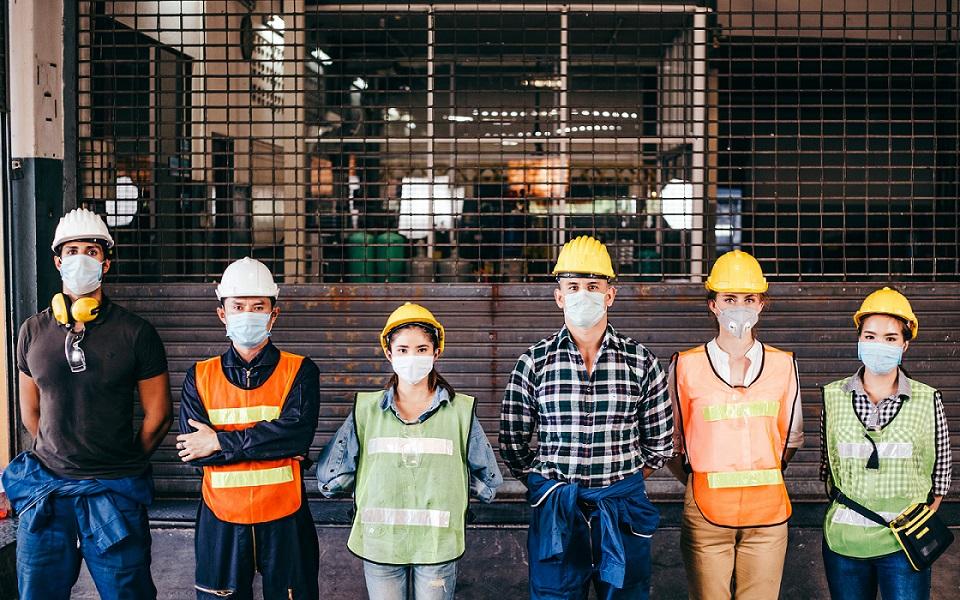Avian Influenza and Worker Safety: Understanding and Managing the H5N1 Risk

Insights informed by the IBEC webinar “Avian Influenza and Worker Safety: Navigating the H5N1 Challenge” held on March 27, 2025.
The rise of highly pathogenic avian influenza (HPAI), particularly the H5N1 strain, presents serious challenges to worker safety across several industries. From poultry farms and veterinary clinics to laboratories and wildlife agencies, anyone working in close contact with birds—or even pets that come into contact with infected animals—may be at risk of exposure.
The Integrated Bioscience and Built Environment Consortium (IBEC) brought together experts to examine the occupational health risks associated with H5N1 and to discuss strategies for protecting frontline workers. Speakers highlighted critical risk pathways, personal protective measures, mental health considerations, and lessons learned from recent research and outbreaks.
Who’s Most at Risk?
Several job sectors are particularly vulnerable to H5N1 exposure, including:
- Poultry production and processing workers
- Wildlife and animal control personnel
- Veterinary and animal health professionals
- Laboratory staff handling avian flu samples
- Waste management teams dealing with contaminated materials
- Public health responders engaged in outbreak control
- Employees with pets, especially domestic cats that roam outdoors or may consume raw meat
Emerging evidence shows that avian influenza can affect domestic and wild cats—sometimes fatally. Dr. Kristen Coleman of the University of Maryland School of Public Health shared research showing that 607 feline deaths linked to AIV have been recorded globally over the past decade across 18 countries and 12 species of felines. Transmission often occurs when cats consume infected birds or raw poultry products. Contaminated raw chicken feed and dairy milk have been implicated in both domestic and captive animals, including tigers.
Additionally, Dr. Maggie Baldwin from the Colorado Department of Agriculture cited two recent cases in indoor-only domestic cats in Colorado, with no known exposure to infected animals. These incidents suggest new and less-understood transmission routes and reinforce the importance of vigilance even in seemingly low-risk scenarios.
How to Reduce Risk: Key Strategies
Protecting workers from H5N1 requires a layered, proactive approach:
1. Training and Awareness
Educating employees about transmission pathways, symptoms, and protective measures is essential. This includes pet safety, as infected cats may serve as early indicators of outbreaks in the area.
Basic pet-related guidance includes:
- Avoid contact with sick or dead birds and animals
- Do not feed pets raw meat or unpasteurized milk
- Keep outdoor animals under close observation
- Report respiratory or neurological symptoms in pets to a veterinarian immediately
If a pet tests positive, it may indicate local viral circulation.
2. Personal Protective Equipment (PPE)
High-risk workers should be equipped with:
- N95 respirators or higher
- Disposable gowns or coveralls
- Nitrile or latex gloves
- Eye and face protection
- Boot covers or disposable footwear
Proper training and compliance monitoring are just as important as PPE availability.
3. Strong Biosecurity and Hygiene Protocols
- Enforce restricted access to poultry and wildlife facilities
- Establish thorough disinfection procedures
- Control the movement of personnel and equipment
- Promote frequent handwashing or use of alcohol-based sanitizers
4. Surveillance and Monitoring
Active surveillance in bird populations—both domestic and wild—is key to early detection and response. Public-private collaboration is vital for timely data sharing and coordinated action.
5. Vaccination and Medical Monitoring
Although no commercial H5N1 vaccine for humans currently exists, seasonal flu vaccination can help reduce co-infection risks. For high-risk roles, employers should consider regular health surveillance and exposure testing.
6. Designated Outbreak Coordinators
For organizations in high-risk sectors, appointing an H5N1 case manager to oversee protocols and incident response can improve outbreak management and reduce confusion.
Enhancing Protection Through Workplace Controls
Employers should implement foundational occupational health strategies:
- Engineering Controls: Improved ventilation and physical containment
- Administrative Controls: Limiting time in high-risk environments, clear work procedures, and task rotation
- Mental Health Support: Providing mental health services for workers under stress or concerned about exposure, especially important in outbreak zones or animal care roles
What to Do During an Outbreak
If an H5N1 outbreak occurs, rapid action is crucial:
- Conduct screenings, testing, and isolation where necessary
- Ensure proper PPE distribution and adherence
- Decontaminate affected facilities and dispose of contaminated materials correctly
- Maintain open communication among animal health, environmental, and public health agencies
- Share accurate information with employees and the public
Final Thoughts
Avian influenza is more than a veterinary or agricultural issue, it’s a growing occupational health concern that requires a multi-sector response. Key actions include prioritizing worker training and protection, maintaining robust biosecurity, and responding swiftly and transparently during outbreaks.
The threat of H5N1 will continue to evolve. Ongoing research, like that of Dr. Coleman and Dr. Baldwin, surveillance programs, and interagency collaboration will be essential to minimizing harm and safeguarding both public and occupational health.
Questions? Reach out to our Health & Safety team today!

